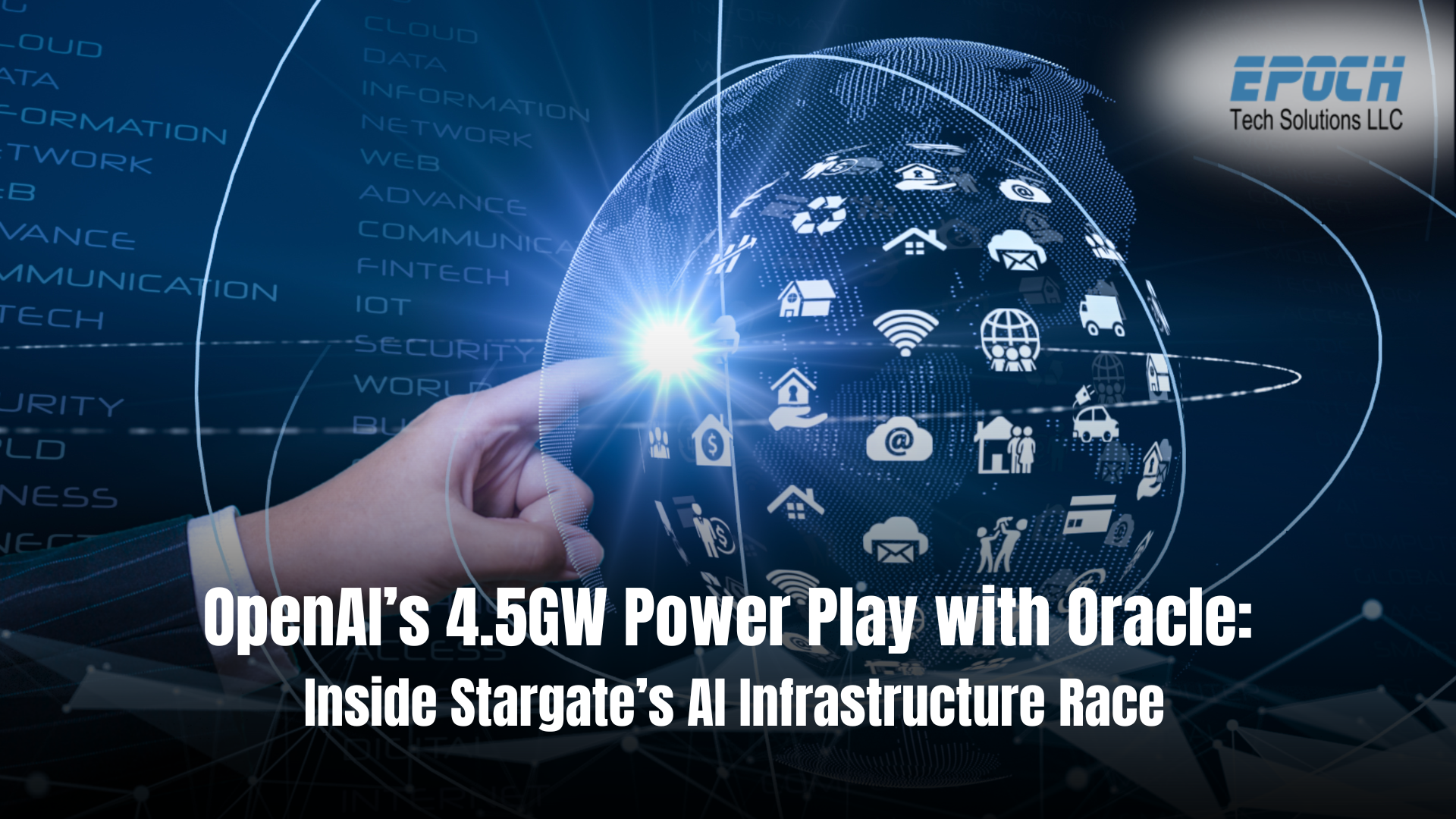OpenAI’s Stargate Project just got a serious power-up.
In what’s shaping up to be one of the largest data center partnerships in U.S. history, OpenAI has inked a deal with Oracle to develop an additional 4.5 gigawatts (GW) of AI-optimized infrastructure on top of what’s already in motion. If that number sounds like it belongs in a sci-fi plot, it’s because it kind of does. This move now puts OpenAI’s total U.S. capacity over 5 GW, and with it, the ambition to train frontier models at a previously unimaginable scale.
Oh, and it might just help light up nearly 2 million homes, if it weren’t all being used to power artificial intelligence instead.
A Comprehensive Review: What Just Happened?
Let’s break it down:
- The Players: OpenAI + Oracle (and yes, SoftBank and MGX are still around somewhere in the credits)
- The Goal: 4.5 GW more data center capacity under the Stargate banner
- The Chips: 2 million+ GPUs (yes, that’s million with an ‘M’)
- The Locations: Texas leads the charge (Abilene is already active), with Michigan, Wisconsin, Wyoming, Georgia, Ohio, and others in the mix
- The Jobs: Over 100,000 new construction and operations roles forecasted
- The Duration: The Oracle lease will stretch over multiple years, expanding America’s AI backbone
Oracle’s task? Build and host these mega data centers. OpenAI’s task? Fill them with enough compute to chase Artificial General Intelligence (AGI) and beyond.
And Sam Altman’s task? Keep everyone believing this scale is not just smoke and mirrors. (Spoiler: He’s got receipts and satellite photos.)
Pros and Cons of This Expansion
Pros
- Massive Job Creation: Especially in rural or underdeveloped U.S. regions
- U.S.-led Infrastructure Boom: Counterbalancing China's AI acceleration
- Technological Advancement: Paving the way for next-gen AI use cases
- Partnership Synergies: Oracle brings cloud, OpenAI brings workload
Cons
- Power Demand: 5+ GW is an enormous strain on local grids
- Environmental Impact: Data centers are not the greenest buildings
- SMB Displacement Risk: Local businesses might see inflated energy prices or get outbid on land
- Funding Concerns: $500B+ is a lot to gather SoftBank’s pockets are deep, but are they deep enough?
Case Studies or Testimonials?
While this is a breaking infrastructure development, early feedback from Abilene suggests the Stargate I site is up and humming. OpenAI is already running workloads on racks of NVIDIA GB200 chips, and construction teams are reportedly moving at “hyperscale” speed.
Chris Lehane, OpenAI’s VP of Global Policy, said Abilene served as a “beta test” and confirmed they can scale with confidence.
We don’t yet have direct user testimonials (not many small biz owners are training GPT-6 in their garage), but real-world ripple effects are already underway.
Expert Insights: How This Impacts Small and Medium-Sized Businesses
Here’s the juicy part how does a $500B+ AI expansion affect the little guys?
THE BAD NEWS:
- Resource Squeeze: Energy prices could spike in high-demand zones. SMBs in data center-adjacent areas (especially Texas and Midwest states) may face higher utility bills.
- Talent Drain: Skilled labor may shift toward the high-paying tech construction boom, leaving SMBs scrambling to retain local talent.
- Access Gap: As Big Tech builds its AI kingdoms, smaller businesses risk being left behind in infrastructure access, compute availability, and competitive edge.
THE GOOD NEWS (and solutions):
- Ride the Local Boom: SMBs in construction, catering, housing, transport, and local services can capitalize on the influx of jobs and people. Sell lunch to 10,000 workers, not just 10.
- Use What They Build: As more capacity becomes available, AI tools will trickle down cheaper APIs, better performance, and new services. SMBs should keep watch on evolving offers from OpenAI, Microsoft Azure, and Oracle.
- Sustainable Shifts: Offset rising power costs by digitizing more processes. AI tools can optimize logistics, automate repetitive tasks, and even handle customer support.
- Partner Up: SMBs can team with AI startups or leverage local university partnerships that tap into this infrastructure. You don’t need 2 million GPUs to be AI-enabled.
This AI boom isn’t just for trillion-dollar players. There’s a place at the table if SMBs are savvy enough to grab a seat.
In Conclusion: Betting Big on the Future
OpenAI’s expanded deal with Oracle shows that we’re not just inching into the AI future; we’re diving headfirst at full voltage. With over 5GW of compute power in play and a staggering investment to match, the Stargate Project is more than a moonshot; it’s an electric empire under construction.
Whether this turns out to be America’s AI Apollo moment or a very expensive light show depends on how the tech ecosystem, including its smallest players, adapts.
Ready to Future-Proof Your Business?
Contact Epoch Tech Solutions today for a free consultation on how your small business can use digital tools, AI integrations, and smarter infrastructure to stay competitive in the age of Stargate.
